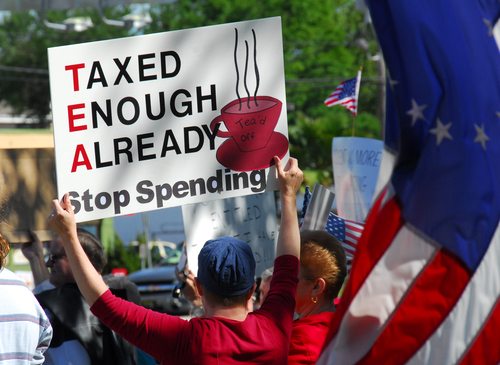
Cheryl Casey / Shutterstock.com
January 11, 2013; Source: Politico
The bellwether election result for the Tea Party movement this past November may well have been Allen West’s loss in Florida’s 18th (formerly 22nd) Congressional District. Unlike Tea Party favorites such as Todd Akin in Missouri and Richard Mourdock in Indiana, whose campaigns simply imploded as the candidates opened their mouths, West had been elected two years earlier based on a no-holds-barred Tea Party message—the same message that obviously didn’t wear well for his electorate.
The same largely holds true for the Tea Party in general, highlighted by the Ultimate Fighting Championship-like battle between Dick Armey and Matt Kibbe at the Tea Party group FreedomWorks. A Rasmussen poll says that the proportion of Americans identifying as Tea Partiers is down from 24 percent in 2010 to only eight percent now. The oft-quoted conservative blogger Erick Erickson at RedState.com concludes that the Tea Party “is in disarray.”
Sign up for our free newsletters
Subscribe to NPQ's newsletters to have our top stories delivered directly to your inbox.
By signing up, you agree to our privacy policy and terms of use, and to receive messages from NPQ and our partners.
Where does the Tea Party go from here to revive its identity, brand, and image? Writing for Politico, Kenneth Vogel and Katie Glueck suggest that although the Tea Party “may have been built by the grass roots, but in order to survive, it’s going to have to rely on the Beltway political machines and big money groups it once disparaged.” Vogel and Glueck suggest that Tea Party activists will have to turn to national groups such as the Club for Growth, American Majority, and Americans for Prosperity to launch their challenges of the Republican “establishment” and Democratic liberals. Might Tea Party groups and activists consider developing “strategic relationships” with FreedomWorks and other national groups because, as Georgia Tea Party board member Tom Maloy told Politico, “we all believe pretty much in the same thing?”
To us, it appears that the national nonprofit/think tank infrastructure has been active within the Tea Party movement from the very beginning, trying to ride the wave of the Tea Party energy convulsing Republican ranks in 2010 (for more on that, see parts one, two and three of our 2010 series on the Tea Party). There are already a number of national players—think tanks and others—vying for Tea Party allegiance and identity (but they might have to get a little smarter about picking candidates who don’t self-immolate on the stump).
{loadmodule mod_banners,Social Media Promotions}
By our count, the Tea Party movement’s infrastructure of support includes American Majority (which trains activists and candidates), the Tea Party Patriots (which “provide[s] logistical, educational, networking and other support to thousands of community-based tea party groups around the country”), Americans for Prosperity (a Koch-affiliated group promoting conservative policies and taking sharp aim at health care reform), the Club for Growth (which finances primary challenges against Republicans deemed not conservative enough and which was vocally opposed to the fiscal cliff deal), and FreedomWorks, which still has plenty of money and resources despite the Armey/Kibbe brouhaha.
The issue for the Tea Party is not whether the movement will now turn to these big national players for financial, technical, and logistical support. Rather, to the extent that grassroots interests and elements initially drove the Tea Party, the question is how much of that momentum was lost by following the national groups’ lead? Does a movement like the Tea Party become compromised and co-opted by its association with entities that have other political allegiances, such as national Tea Party groups that are run by Republican political operatives or consultants? But without more heavy involvement by such groups, does the Tea Party run the risk of emulating Occupy Wall Street, whose lack of a strong national infrastructure led to an impression of anomie, fragmentation, and disorganization? What advice would you give the Tea Party?—Rick Cohen











